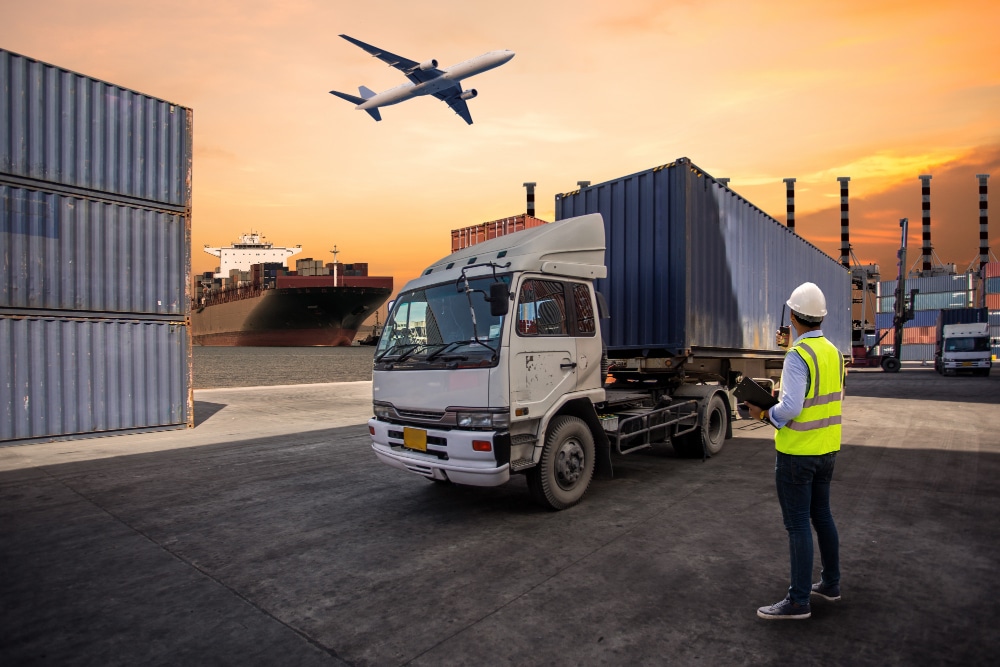Timely delivery is a crucial aspect of any business, but unfortunately, delivery delays can be a common occurrence.
Various factors contribute to late deliveries, from logistical challenges to internal inefficiencies, impacting your reputation and customer satisfaction. However, you can minimize these risks with careful planning and proactive measures.
In this blog post, we’ll explore common causes of delivery delays and provide practical tips to avoid them. Whether new to shipping or looking to optimize existing processes, this guide will equip you with insights and strategies to ensure reliable and timely deliveries.
Business impact of delivery delays
Unhappy customers
Timely delivery is an essential factor in customer satisfaction. When products or services don’t arrive as expected, customers can become frustrated, disappointed, and even angry.
These unhappy customers may share their negative experiences with others, leading to potential customer loss. In today’s interconnected world, where online reviews and social media can amplify customer voices, one dissatisfied customer can have a far-reaching impact.
Damage to reputation
Delivery delays can tarnish a company’s reputation. Customers who experience delays may question the reliability and professionalism of the business.
Word-of-mouth spreads quickly, and negative reviews or feedback can deter potential customers from engaging with your brand. Trust and reputation are hard-earned and easily damaged, making it crucial to prioritize prompt and reliable deliveries.
Increased costs
Delivery delays can tarnish a company’s reputation. Customers who experience delays may question the reliability and professionalism of the business.
Word-of-mouth spreads quickly, and negative reviews or feedback can deter potential customers from engaging with your brand. Trust and reputation are hard-earned and easily damaged, making it crucial to prioritize prompt and reliable deliveries.

Most Common Causes of Delivery Delays
Inventory Issues
Inventory management plays a crucial role in ensuring smooth order fulfillment. If there are inventory issues, such as insufficient stock or inaccuracies in tracking inventory levels, delays can occur.
For example, if a product is unexpectedly out of stock, it may take time to restock or source the item from an alternative location.
Additionally, inaccuracies in inventory tracking can result in accepting orders for items that are no longer available, leading to delays while resolving the discrepancy or finding suitable substitutes.
Holiday season
The holiday season is typically characterized by a significant increase in consumer demand, which can put a strain on logistics networks. The surge in order volumes during this period can overwhelm warehouses, fulfillment centers, and transportation providers.
The increased workload can lead to delays in processing orders, longer handling times, and extended delivery times.
Moreover, the sheer volume of packages being processed and shipped can cause delays at various stages of the supply chain, including sorting, labeling, and transportation.
Package label errors
Accurate and clear labeling is essential for efficient package handling and delivery. Package label errors can occur due to human error during the labeling process or issues with automated systems.
Incorrect or incomplete information on labels, such as wrong addresses, missing apartment numbers, or illegible barcodes, can cause delays as it becomes challenging to identify the correct destination or match the package with the intended recipient.
Resolving label errors often involves manual intervention and can result in additional processing time and delays.
Traffic and road congestion
Delivery vehicles are susceptible to delays caused by traffic congestion, especially in densely populated areas or during peak commuting hours. Heavy traffic can slow down the movement of vehicles, resulting in longer travel times between pickup and delivery points.
Additionally, road congestion can lead to delays in accessing certain areas, especially if there are restrictions or limited parking options.
Delivery companies often have to adjust their routes or shipping schedules to account for traffic conditions, but unexpected delays can still occur.
Difficult weather conditions
Inclement weather, such as storms, hurricanes, heavy snowfall, or flooding, can significantly impact the transportation and delivery of packages. Severe weather conditions can pose safety risks for drivers and air travel disruptions, leading to delays or cancellations.
Poor road conditions, airport closures, or limited visibility can make it challenging for delivery vehicles and carriers to operate at full capacity.
In such cases, delivery companies prioritize safety and may need to reschedule deliveries or hold packages until conditions improve, resulting in delays.
Delivery vehicle issues
Mechanical problems or accidents involving delivery vehicles can cause unexpected delays. Vehicles used for transportation, such as trucks, vans, or drones, may experience breakdowns, flat tires, or engine malfunctions that require repairs.
These issues can occur en route or during the loading and unloading process, resulting in delays as the vehicles need to be serviced or replaced.
Additionally, accidents or traffic incidents involving delivery vehicles can lead to temporary disruptions in the delivery schedule.
Operational inefficiency
Inefficient processes within the logistics chain can contribute to delays. This can include inefficient sorting, routing, or handling of packages at various stages, such as warehouses, fulfillment centers, or distribution hubs. Inadequate staffing levels or lack of trained personnel can impact the speed and accuracy of order processing.
Similarly, insufficient or outdated equipment, such as conveyor belts or scanning devices, can lead to bottlenecks and slow down the movement of packages.
Poor coordination among different stages of the delivery process, such as delays in handoffs between carriers or inefficient route planning, can also result in operational inefficiencies and delivery delays.

How to reduce delays in deliveries
Use a delivery management system
A delivery management system is a comprehensive software solution that enables efficient management of the entire delivery process. It automates and streamlines tasks such as order processing, dispatching, and tracking.
By centralizing information and providing real-time visibility into orders and deliveries, a delivery management system helps optimize workflows and reduce delays.
It allows for better coordination between drivers, dispatchers, and customers, ensuring smooth communication and efficient handling of delivery requests.
Implement real-time tracking for deliveries, drivers, and vehicles
Real-time tracking technology allows for continuous monitoring of deliveries, drivers, and vehicles. By utilizing GPS or other tracking systems, businesses can have real-time visibility into the location and status of packages.
This information is invaluable in proactively managing potential delays. Dispatchers can quickly identify any issues or deviations from the planned route and take necessary actions to mitigate delays.
Real-time tracking also enables businesses to provide accurate and up-to-date information to customers regarding the estimated arrival time of their packages, enhancing transparency and customer satisfaction.
Strategic alliances with reliable vendors
Building strategic alliances with reliable vendors and carriers is crucial for minimizing delays. By partnering with vendors known for their strong logistics capabilities and on-time performance, businesses can leverage their expertise and networks to ensure timely deliveries.
Collaborating closely with reliable vendors enables better coordination, smoother handoffs between different stages of the supply chain, and faster resolution of any issues that may arise.
Strategic alliances also provide access to alternative transportation options or backup resources in case of emergencies or unexpected delays.
Contingency planning
Contingency planning involves anticipating potential disruptions and developing plans to address them. This includes identifying risks such as severe weather conditions, labor strikes, or infrastructure failures that could impact the delivery process.
By having contingency plans in place, businesses can respond quickly and effectively to minimize the impact of disruptions.
For example, backup transportation options can be arranged, alternative routes can be pre-determined, or additional resources can be allocated to handle increased demand.
Contingency planning ensures that the business is prepared to adapt to unforeseen events and maintain the delivery schedule as much as possible.
Offer electronic proof of delivery
Electronic proof of delivery (ePOD) systems eliminate the need for paper-based documentation and streamline the delivery confirmation process.
With ePOD, drivers can capture signatures, photos, or other forms of confirmation electronically using mobile devices or specialized handheld devices. This reduces administrative delays associated with manual paperwork and speeds up the confirmation process.
The electronic data is instantly transmitted to the system, providing real-time confirmation of delivery. It enhances efficiency, accuracy, and transparency in the delivery process, enabling businesses to promptly address any discrepancies or issues.
Route optimization
Route optimization software utilizes algorithms and advanced planning techniques to create the most efficient delivery routes. It takes into account various factors such as delivery locations, traffic conditions, time windows, and vehicle capacities.
By optimizing routes, businesses can minimize unnecessary mileage, reduce fuel consumption, and maximize driver productivity. Efficient routes help drivers navigate more effectively, avoid traffic congestion, and complete deliveries in a timely manner.
Route optimization software also allows for dynamic adjustments to routes based on real-time traffic updates, further reducing delays caused by unexpected road conditions or congestion.
Delivery days are a problem of yesterday with Detrack.
Are you tired of dealing with delivery delays and the associated headaches? Say goodbye to those frustrations and embrace a seamless delivery experience with Detrack. Sign up for a free trial today and discover how Detrack can transform your delivery operations.
With Detrack, you can ensure on-time deliveries, improve customer satisfaction, and boost your business’s reputation. Don’t let delivery delays hold you back any longer – choose Detrack and deliver with confidence!
























